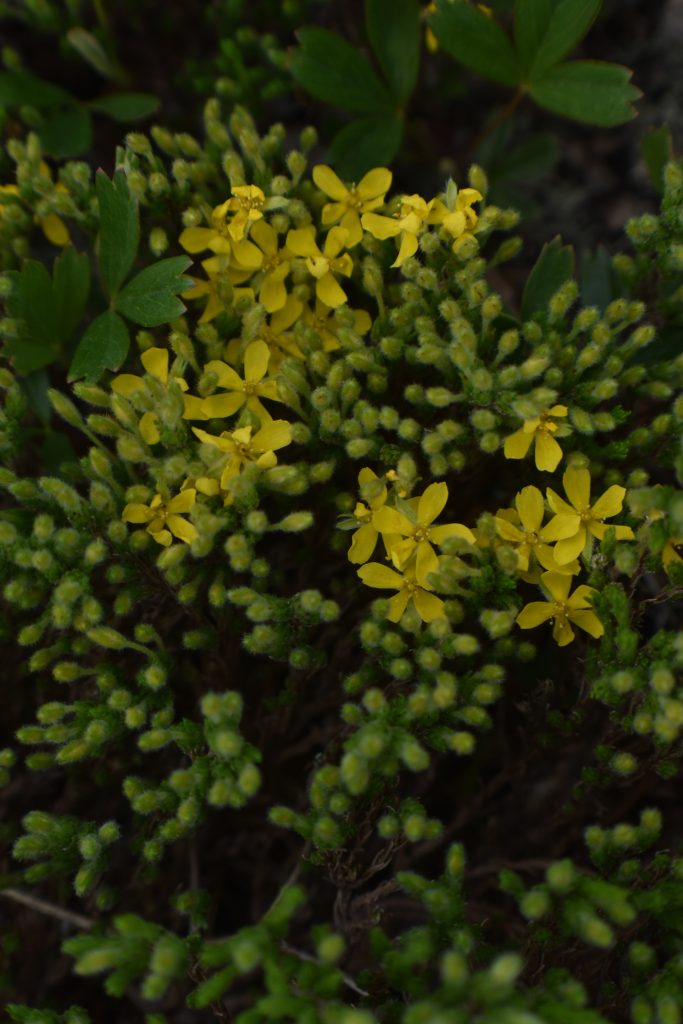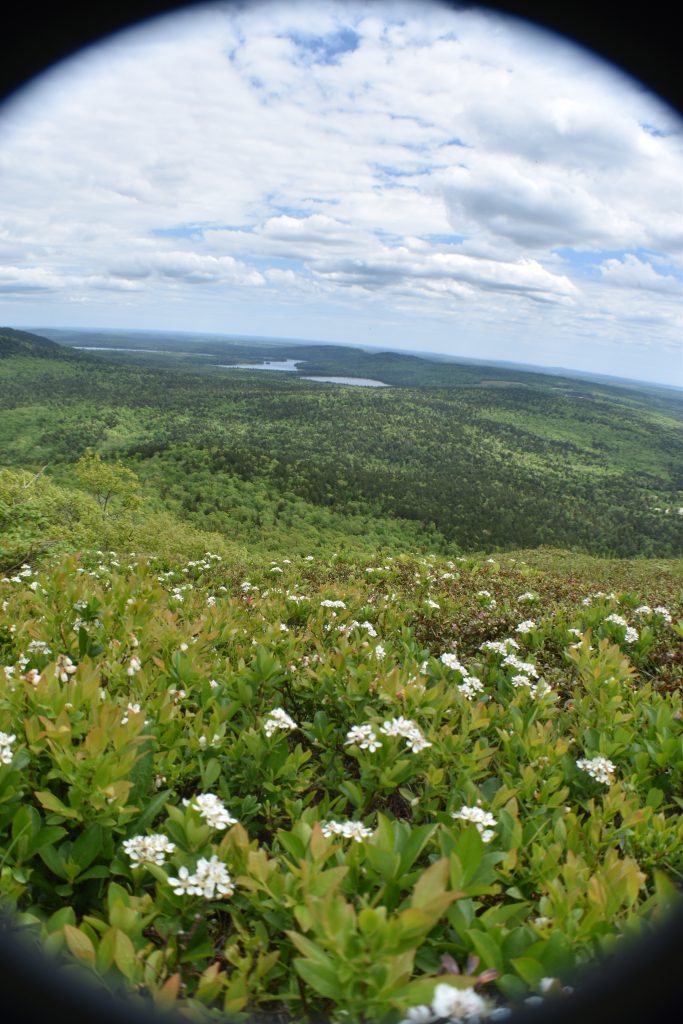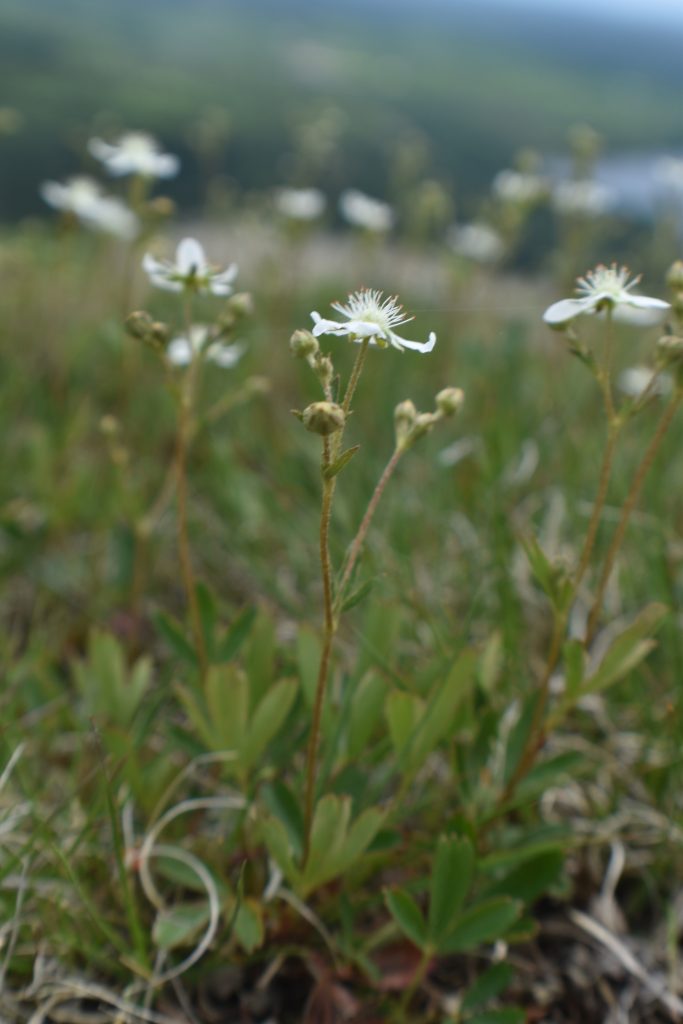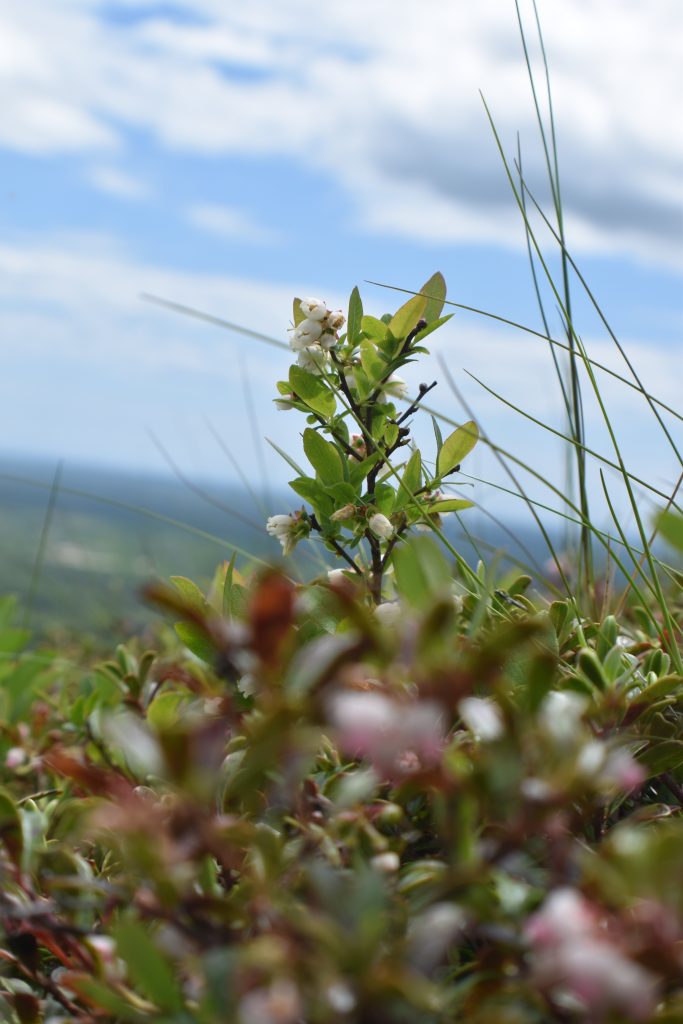Plant Stories
By Andrea Tirrell
Plant communities can often tell stories of past events. Such events, as a result of climate, weather, species interactions, extinctions, colonizations, and changes in land-use, to name a few, can drive the assemblage of species across landscapes. Strange coastal-plain dwelling shrubs and alpine herbs cohabit the open granitic ledges of Schoodic Mountain, near what is now known as Sullivan, Maine. The strange assortment of plant species occurring here are likely the result of many important events that occurred since this land was unveiled after glacial retreat some 13,000 years BP, including influence from fire, weather, people, and geology. Through the eyes of an ecologist, the events that took place on this mountain are laid bare by the plants that occur here. The same can be said for our future: the existence of certain plant communities into the future likely relies heavily on the presence of climate refugia in the face of unchecked climate change. Places like Schoodic could therefore be a refugia for a normally disparate assemblage of plant species. The conservation of plant species is directly tied to our understanding of the past and our resistance or resilience under future scenarios. Therefore, plant communities, I’d say, can often tell stories of future events, too.
Hudsonia ericoides : pine barren goldenheather, a low growing shrub and member of the rock-rose family Cistaceae that typically dwells in dry, open habitats including grasslands, balds, and barrens.
Schoodic Mountain: A low elevation mountain bald, characterized by the unique, fire-adapted vegetation that inhabits its summit. Many plant species that occur here also occur across a variety of elevation gradients, from the coastal plain at sea level, to northeastern alpine zones (4000-6000 ft above sea level).
Sibbaldiopsis tridentata – three-toothed cinquefoil, a member of the rose family Rosaceae typically found in open, rocky areas, all the way from the alpine zone down to coastal cliffs, and forested openings.
Vaccinium angustifolium: lowbush blueberry, a member of the blueberry family Ericaceae that typically grows as a forest understory shrub, as well as in open landscapes like mountaintops and alongside trails.





